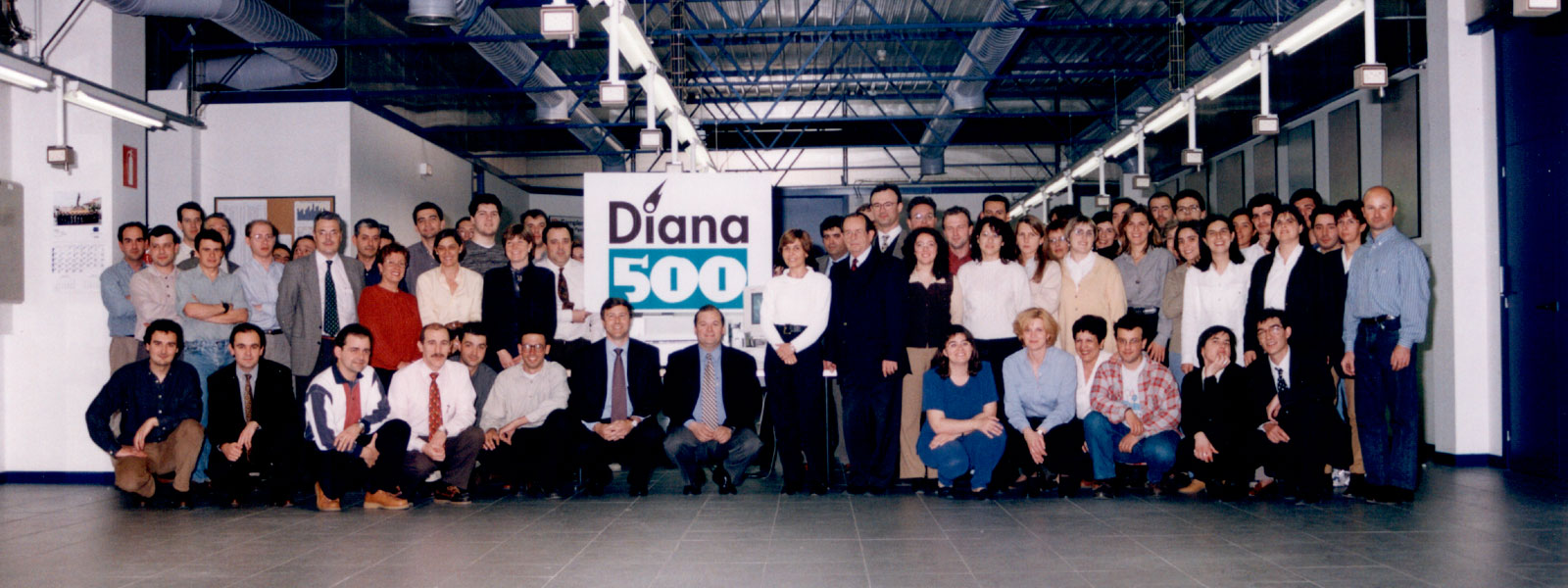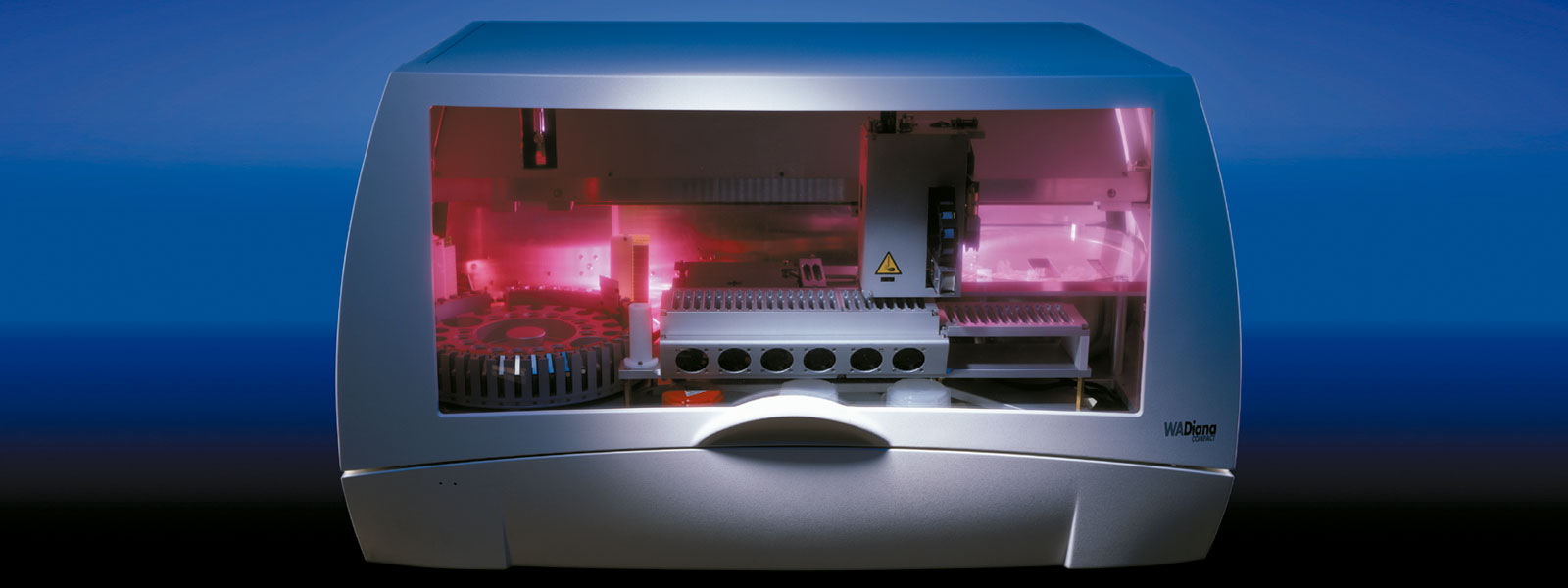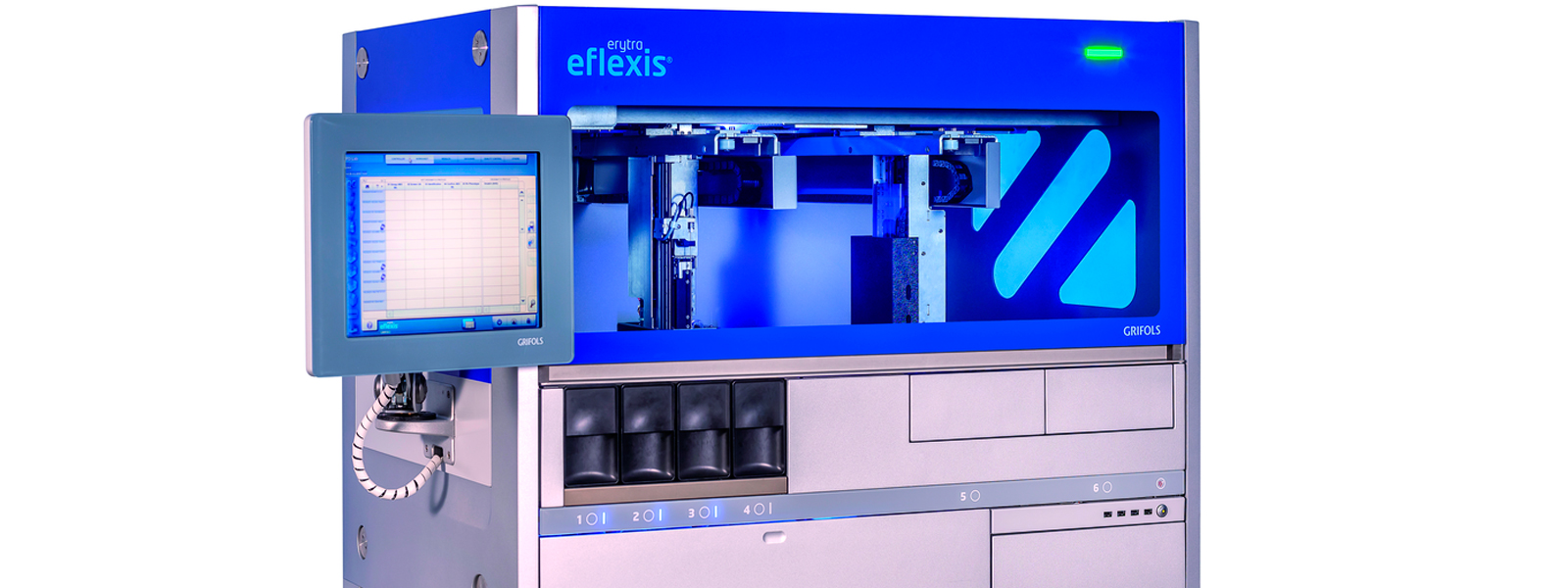The automation of blood typing
Pioneers in fully automating the gel column agglutination technique
Technical file
Type of innovation: System
Scope: Clinical Analysis
Innovation leader: Shared leadership
Year: 1993
Period: 1972-2002
Geographical scope: International
Economic impact: High
Level of innovation: Disruptive
Patent: Yes
Interdisciplinary connections: -
The gel column agglutination technique
Gel column agglutination technology offered improvements in speed, ease of use, safety and reliability and represented significant progress in blood banking. Dr. Yves Lapierre's gel-based hemagglutination method, patented in 1984, would become an industry standard. Blood grouping reagent suspended in gel sits in columns on cards of six to eight wells. Swiss firm DiaMed began marketing the technology in Europe and the United States in 1988. The technique has four stages: pipetting, incubation, centrifuge, and the reading and interpretation of results. Grifols was a pioneer in automating the process.
Grifols and the automation of the gel column agglutination technique
Grifols Diagnostic secured the distribution rights for DiaMed's blood typing gel cards in Spain and Portugal. The R&D team developed devices to semi-automate the new method. Overcoming initial reticence to the innovations, DiaMed sold the Grifols-designed equipment worldwide under its own brand, namely an incubator and the Diana processor (a portmanteau of diagnostic analyzer), distributed as the ID Sampler II.
Grifols progressed to equipment to fully automate the test. The DiaMed Reader, for instance, read the results of the gel cards. Another development was to pioneer the automation of the pipetting of samples into the wells of the gel card's microtubes, thus minimizing the risk of human error. That included the idea of pipetting directly by piercing the card's seal.
In a later innovation, when Grifols had switched to working with French gel card manufacturer Diagast, the Twin Reader could read both cards and microplates simultaneously. The Twin Reader operated in unison with the Diana, connected to the same PC and sharing the same user interface and database, thereby preventing errors. Grifols also developed a special centrifuge for the process, the DG-28.
Automating the laboratory routine of pretransfusion tests improved the speed, standardization, and safety of transfusion diagnostics.
“Automating the laboratory routine of pretransfusion tests improved the speed, standardization, and safety of transfusion diagnostics.”
The Diana system
Grifols parted ways with DiaMed in 1996, prompting the company to develop and sell the Diana system under its own brand. The processor now automated the first two stages of the technique, pipetting and incubating the blood samples, while the centrifuge and reader, sold in conjunction with the Diana processor, performed the last two stages. Grifols also went on to supply its own reagents, packaged in the DG gel cards.
This automation saved time and space and reduced the risk of sample contamination. And it was small enough to fit into the limited space of the typical immunohematology lab. By 1999, six years after its launch, it had sold 500 units and triggered the expansion of the Grifols Diagnostic division.

The WADiana system
The next generation of Diana processor was launched in 1998. The WADiana autoanalyzer (the WA stood for walk-away) incorporated the centrifuging process and the reading of results into a single machine, utilizing software to reduce the risk of human error in the process. The WADiana was adopted in many laboratories and led to cooperation agreements with DiaMed in Europe, with the Johnson & Johnson group's Ortho Clinical Diagnostics in the United States and with Olympus in Japan.

Erytra
Further innovations in the automation of blood typing included expanded processing capacity, with the Erytra (2010), and improved blood compatibility testing, with the Erytra Eflexis (2017).

Bibliography
Avellà, R., & Miquel, B. (Eds.). (2015). Cuando un sueño se cumple. Crónica ilustrada de 75 años de Grifols. Barcelona: Grupo Grifols, S.A.
Grupo Grifols. (1994). Sistema robotizado de análisis Diana. Revista Cosmos: periódico para los colaboradores del Grupo Grifols, 1(2), 5.
Grupo Grifols. (1996). Sistema Diana: más cerca, más claro. Revista Cosmos: periódico para los colaboradores del Grupo Grifols, 4(1), 5.
Grupo Grifols. (1998). Diagnostic Grifols celebra la fabricación del robot Diana número 500. Revista Cosmos. Periódico para los colaboradores del Grupo Grifols, 9(2), 6.
Grupo Grifols. (2000). WADiana Compact incorpora un nuevo software que aumenta la fiabilidad de los resultados. Revista Cosmos. Periódico para los colaboradores del Grupo Grifols, 16(2), 6.
Grupo Grifols. (2004). Diagnostic Grifols celebra la unidad número 1000 del analizador WaDiana. Revista Cosmos. Periódico para los colaboradores del Grupo Grifols, 29(4), 8.
Related innovations
REAGENT
Gel cards
DEVICE
Gel card incubator
REAGENT
Control sera and the ABO blood typing system